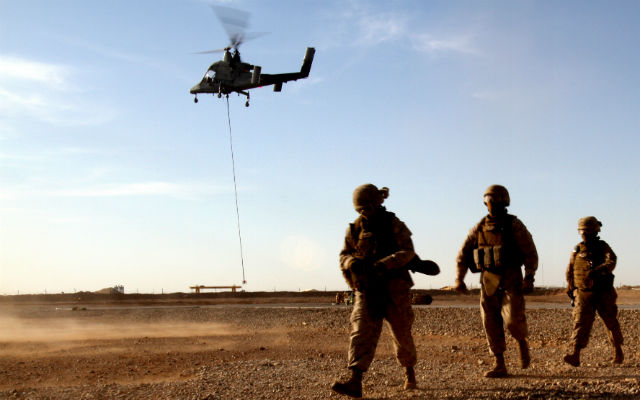Kaman is nearing a decision on re-launching commercial production of the manned K-MAX helicopter after a 11-year hiatus.
The company is ready to restart production if it receives deposits for as few as 10 of the high-lift helicopter with inter-meshing rotors, says Terry Fogarty, general manager of Kaman's unmanned air systems group.
"What would it take? Give me a deposit on 10 sales agreements," he says.
Kaman is currently defining pricing for the 2.7t (6,000lb)-class helicopter, he says.
Restarting production came under consideration after Kaman received 20 requests last year for K-MAX aircraft, Fogarty says.
Demand is coming mainly from forest firefighting operators.

US Marine Corps.
As the"aerial truck" described in Kaman's product brochures, the K-MAX is designed for lifting heavy loads more efficiently than single-rotor helicopters. The inter-meshing rotors produce no adverse torque, requiring no power to be offloaded to a tail rotor.
As a result, the inter-meshing rotor system uses all power for vertical lift within a compact rotor diameter.
Kaman delivered 38 K-MAX helicopters powered by the Honeywell T53 engine from 1999 to 2003.
The US Marine Corps later became interested in developing the aircraft as an autonomous cargo delivery system. Kaman partnered with Lockheed Martin to make the aircraft optionally piloted.
The Marines deployed two aircraft to Afghanistan for a six-month demonstration, which was renewed despite the crash of one K-MAX last June.
Kaman previously looked to the US military to restart K-MAX production with a programme of record for an autonomous cargo delivery system. But no funding for such an aircraft appears forthcoming.
However, re-starting commercial production of the K-MAX could make it easier for military customers to move forward on the unmanned programme, Fogarty says.
Kaman could have the K-MAX production line in Bloomfield, Connecticut, restarted within 12-15 months, he says.
To keep costs low, the company does not plan to make changes that would require re-certification. But new aircraft would be upgraded to comply with service bulletins since production ceased in 2003, he adds.
Source: FlightGlobal.com























